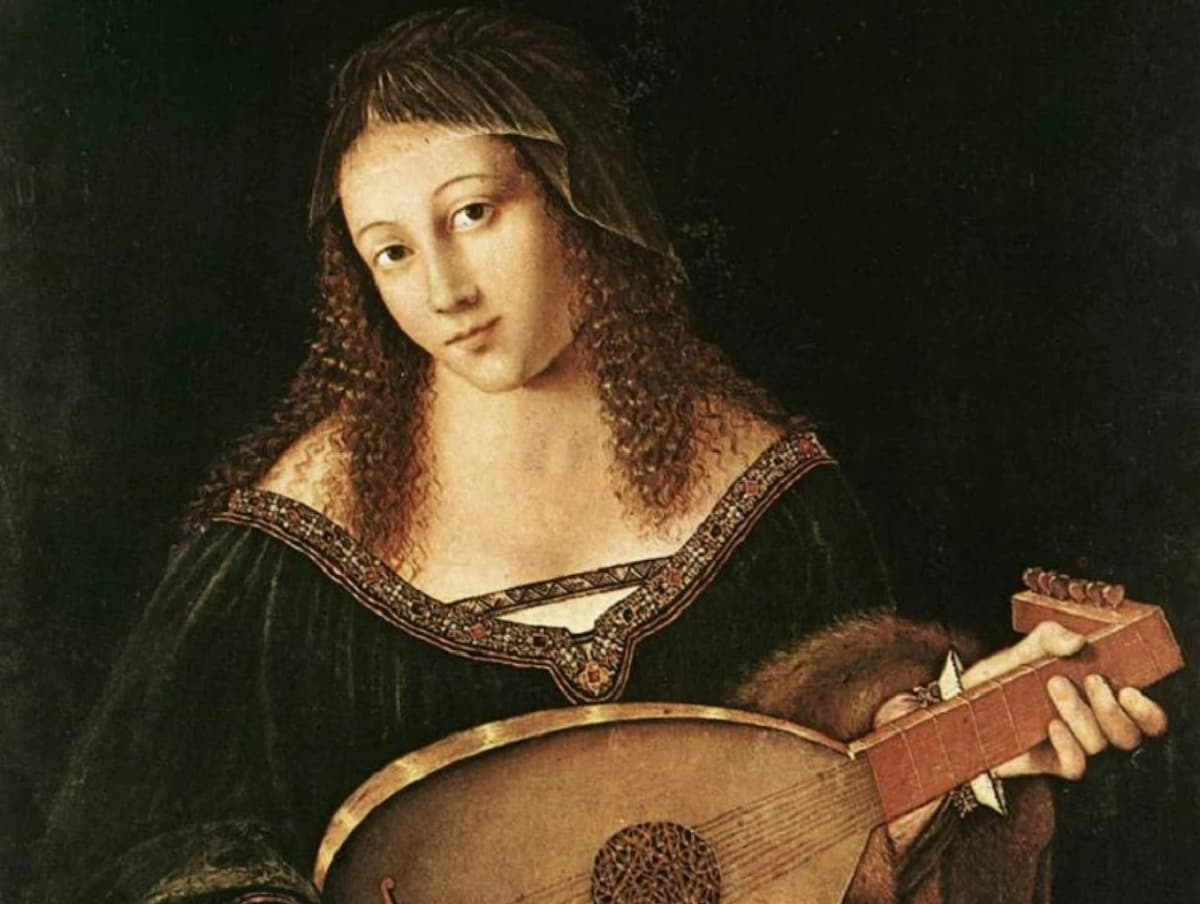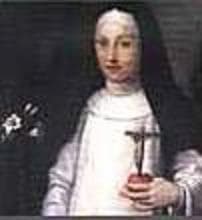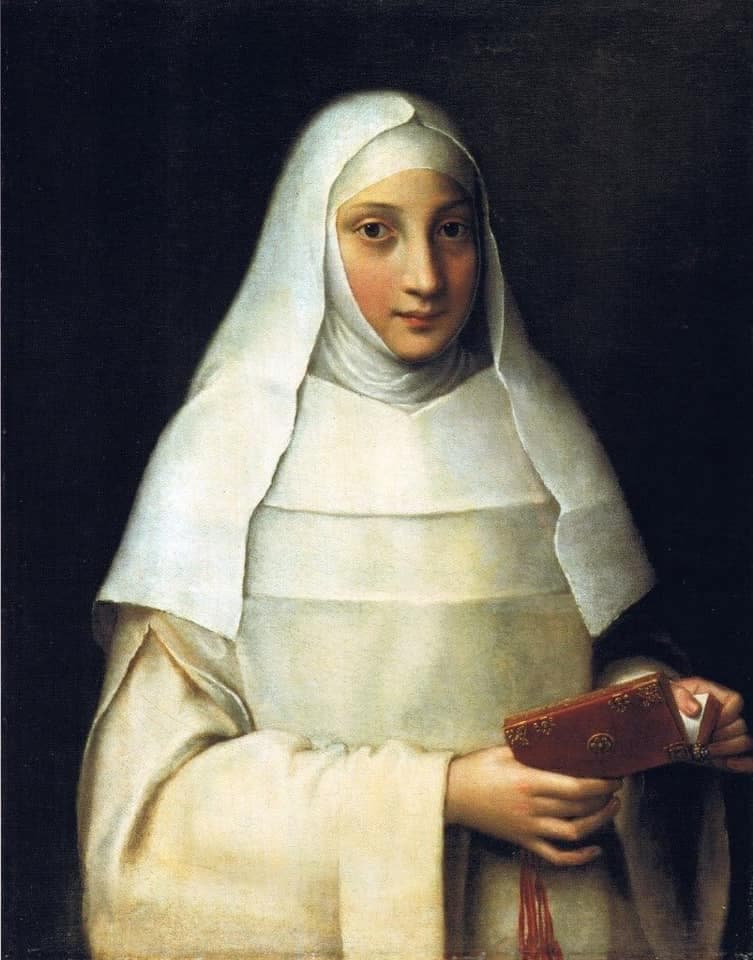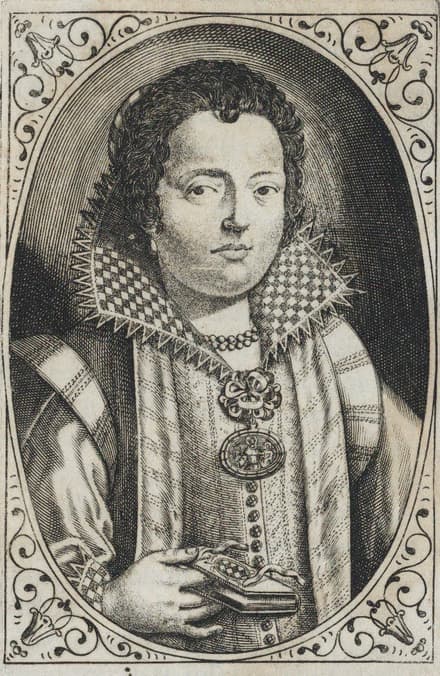One of the most frustrating things when it comes to learning about women composers from the Renaissance is that we know they existed, but all of their biographies are very bare-bones.
When it comes to these mysterious, super-talented women, we have to make our best guesses as to the details of their biographies, or at least be at peace with the little we do know and just enjoy the incredible music they left behind.
So with that in mind, here are the stories of six women composers from the Renaissance.
Maddalena Casulana – ca. 1544-ca. 1590

Maddalena Casulana
Maddalena Casulana was probably born near Siena and educated in Florence.
In 1566, as a young woman, she published four madrigals, a collection known as “Il Desiderio” (The Desire).
Two years later, in 1568, she published “Il primo libro di madrigali” (The first book of madrigals).
As its title suggests, this was the first printed musical work by a woman in the history of Western music.
Casulana didn’t stop there, though. Between 1570 and 1586, she published three more books of madrigals in Venice.
We know she traveled widely, including to Verona, Milan, Florence, Venice, and even the French imperial court.
She appears to have had a warm relationship with her patron, Isabella de’ Medici. She dedicated “Il primo libro di madrigali” to her.
Translated, that dedication reads, “[I] want to show the world, as much as I can in this profession of music, the vain error of men that they alone possess the gifts of intellect and artistry, and that such gifts are never given to women.”
In 2022, a musicological miracle occurred: an announcement was made that seventeen additional Maddalena Casulana madrigals had been discovered in the archives. That year, some selections were brought back to life for the first time in over four centuries on a BBC broadcast.
This discovery proves that the work of women composers from the Renaissance era may well still be out there, patiently waiting for rediscovery…even hundreds of years later!
Morir non può mio cuore (M. Casulana) Score Animation
Lucia Quinciani – ca. 1566-?
We don’t know where Quinciani lived or worked exactly (Venice? Verona?), but we know she was Italian, like all of the other women on this list.
We also know that she was a student of composer Marcantonio Negri, because Negri published a work of hers in a volume of music and mentioned in it that she’d been a pupil.
The work he chose for publication was a piece titled “Udite lagrimosi spirti d’Averno, udite” (Listen, tearful spirit of Averno, listen).
This means that Quinciani was the earliest published woman composer of monody, defined by Encyclopedia Britannica as a “style of accompanied solo song consisting of a vocal line, which is frequently embellished, and simple, often expressive, harmonies.” In other words, she was the first woman songwriter in classical music history.
LUCIA QUINCIANI: Udite lagrimosi spirti d’Averno
Claudia Sessa – ca. 1570-ca. 1617

Claudia Sessa
Claudia Sessa was born into an aristocratic Milanese family. She became a nun and composed two sacred works, “Occhi io vissi di voi” (I have seen your eyes) and “Vatteme pur Lascivia” (Go away with lasciviousness).
One contemporary writer claimed that “there was not a singer who could equal her” and that she was very popular with the nobility in Parma and Mantua.
CLAUDIA SESSA: Vattene pur lasciva orecchia humana
Vittoria Aleotti ca. 1575-post-1620
Vittoria Aleotti is a bit of a mystery: some scholars believe that another composer, Raffaella Aleotta, is the same woman, while others disagree and say the two women are sisters.
Vittoria (and maybe Raffaella, too, if they were indeed sisters) was born in Ferrara, Italy, to a wealthy architect. Art and music must have been important to the family, because as soon as it became clear that Vittoria was a child prodigy, her family sought musical training.
When she was around six years old, she was sent to a convent in Ferrara known as San Vito, famous for the quality of its music teaching. When she was fourteen, Vittoria joined the convent.
In 1591 she published her first madrigal, “Di pallide viole” (Of pale violets), in a collection. More works would follow.
There are records of Raffaella being praised for her ability on not only the harpsichord and the organ, but on wind instruments, too.
Kammerkoret Musica – Te amo mia vita – Vittoria Aleotti
Sulpitia Cesis – 1577-?

Sulpitia Cesis
Sulpitia Lodovica Cesis was born in 1577 in Modena, Italy, to an aristocratic family. When she joined the convent in 1593, her father gave the convent 300 pieces of gold as a dowry.
Cesis was a well-known lutenist, but today we remember her best for her music.
In 1619 she wrote a collection of 23 religious motets, called the “Motetti Spirituali” (Spiritual Motets). They were written for as few as two voices…and as many as twelve! Also, interestingly, they include parts for instruments including horn instruments and strings.
Sulpitia Cesis – Motetti – Cappella Artemisia
Adriana Basile – 1586-1642

Adriana Basile
Basile was born in 1586 in Naples, toward the very end of what scholars consider to be the Renaissance period.
Her family worked at the court of the House of Gonzagas in Manuta. She even married a member of the court, and bore children who also ended up working for the court.
Despite her devotion to the House of Gonzagas, she also traveled widely in Italy. She was in-demand as a performer, and for good reason. No less than Claudio Monteverdi believed that she was a more talented singer than Francesca Caccini, a singing star who wrote the first surviving opera by a woman. Apparently in 1623, Basile and Caccini took part in an improvised poetry competition. No word as to the outcome of that competition!
She retired in 1626, and later lived in both Naples and Rome before she died.
None of her works survives, but this performance gives an idea of what a back-and-forth with Caccini might have sounded like:
CONCERTO dal repertorio di Adriana Basile, la “Sirena di Posillipo”
For more of the best in classical music, sign up for our E-Newsletter
